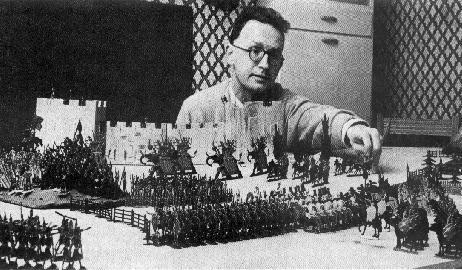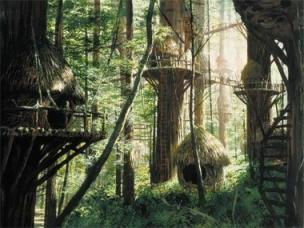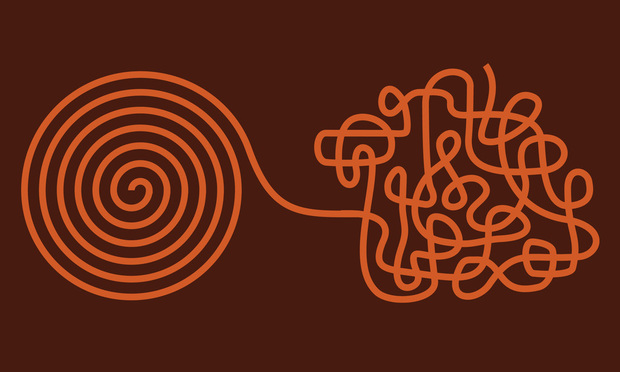I am more a rules-imaginer than a setting-imaginer. But I'm getting more into exploring my campaign setting than ever before.
There are multiple overlapping ages of rise and collapse of mighty civilizations that define the Perilous Realms and the kinds of ruins, underworlds, treasures, magic items and artifacts that may be found. Here is the myth, or legend of the various apocalypses and dark ages that led to the current state of the Perilous Realms, my campaign setting.
The Diamond Aeon
In this age, the archetypal powers were young and playful children of the Most High.
They knew their place, and, although childishly mischievous at times, obeyed the will of their Father.
They reigned over the cosmos like living stars.
In the end, the archetypal powers come of age, and conflict ensues.
They rebel against their Father and are thrown into the chaos of war.
In terms of the way we think of things now, we are talking about billions of years ago. Thus this loosely corresponds to “big bang” through cooling down of the universe. In Tolkienesque terms, this is like the Valaquenta. The key to this fall narrative is REBELLION. So whenever we see rebellion in the campaign setting it links somehow to the Powers.
The Golden Age
Law and chaos draw their lines for the first time.
The Celestials seek to establish the joy of the Diamond Aeon through Law, and often fall into rigid legalism.
The Chthonic powers seek to empower the unbridled joy of the Diamond Aeon through following the passions of the underworld and often fall into the cruelty and whim.
Many powers opt out and hide as spirits of nature and life ("neutral" elemental powers).
The war shapes much of the terrain of the Perilous Realms.
Ultimately, the Celestials drive the Chthonics under earth and imprison them there, only to serve for fertility and virility.
The Celestials establish a Golden Era of light and genius upon the earth — with unparalleled cyclopean edifices and artifacts!
At this time, the fay races are born into the wonder of direct contact with their fascinated rulers.
But the Celestials become too confident in their victory, and their watches fall into indiscipline.
In the end, the earth cannot contain the chaos that errupts.
The final war leads to total apocalypse and a dark age ensues.
In terms of the way we think of things now, we are talking about millions of years ago. Thus this loosely corresponds to a kind of smashing together of the mesozoic and its great meteoric (heavenly) and volcanic (chthonic) apocalypse together with the monolithic stone age. This nicely gives us cavemen with dinosaurs! This era gives a chance to engage the Lovecraft Mythos. The key to this fall narrative is COMPLACENCY.
Interlude: The Age of Darkness
The fell races are born and run free but unorganized.
The Silver Age
Out of the shadows of the Age of Darkness, the Fay races form an alliance, consulting what Powers still remain in their weakness and sorrow.
With the advice of their cosmic elders, the fay together stem the tide of the spawning hoard.
The elves rise to power over all other fay.
They establish a Silver Era under the light of their matron, Mother Moon.
They enslave the fell races, especially the orcs, to do their bidding — and on their backs they build mighty cities, towers, and palaces unrivaled by any save the powers themselves.
But the orcs and their fellow fell never forget their enslavement.
At this time, Men arrive, the fay know not from where — nor do the men! They are in awe of the elves.
But the elves in their assumption of opulence grow fatuous, weak, superficial, degenerate — and their civilizations fall into decadence.
Thus they become easy targets for fell rebellion — if they are not dragged down by their own petty divisions and meaningless wars of trumped up honor.
The collapse of the elves is a slow and painful decline, leading, ultimately, to a second dark age.
In terms of how we think now, we are talking about several millennia ago. Thus this roughly corresponds to the great pre-historic civilizations of myth. This era allows me to smash together Tolkien's and Anderson's elves. The key to this fall narrative is DECADENCE.
Interlude: The Second Dark Age
Pacts with the chthonic power, Necros render the first Undead. Alchemical and medicinal warfare fabricate the disease of lycanthropy. Monsters proliferate.
The Bronze Age
The bronze age is the first age of Men.
In the memory of the elven empires of old, and in devotion to, and under the patronage of what remains of the mighty Powers, men erect fabulous temples. Around these temples, cities grow up — Ur, Babel, Byblos, Shangri-La, Hamunaptra, Aqaba, Thebes, Indus, Eddo, Techlan, Cyprus.
These temple-cities become the center of mighty and diverse empires in trade with one another of both goods and philosophies.
At some point, men cannot remember how or why these great empires all suddenly (with decades of one another) fell into complete collapse.
It is not likely that the collapse came about either because of internal disputes or because of external wars, although these played a part, but from the evidence it seems the “gods” (Powers) no longer favored them and removed their blessings of abundance.
This is the great Bronze Age Collapse.
The human population was decimated and the survivors fled to hills and mountains to survive.
The “Ancients” left behind powerful ruins, tombs, sepulchers and crypts — of frightful aspect to the fragile humans who remained.
In terms of how we think now this represents several centuries ago. Thus this is a fantasy version of the actual Bronze Age Collapse. This allows us to engage classical mythology and legend. The key to this fall narrative is divine ABANDONMENT.
Now: The Age of Adventure
Now is the age of adventure!
Now law and chaos reenter their struggle for vast civilizations of lawful glory or unbridled passions and dominion.
Now mighty fighting-men and Amazons rise up to pit their thews against the dying of the light!
Now over-confident users of magics seek their own through initiations into the mysteries of the arcane.
Now the church proclaims a gospel of universal order under a king of heaven and sends out crusaders (“clerics”) to establish Law: by word or by fist.
Now fearless — or foolish — adventurers commit to mighty peregrinations into forgotten wildernesses and yawning openings of the mythic underworld.
In terms of how we think now, this represents about the last millennium. The Perilous Realms campaign begins in an imaginary year 990. In a sense, this is a Third Dark Age. It roughly corresponds to a mash up of the Iron Age and both the Western and Eastern Middle Ages. This age engages Leiber's universe of Nehwon. The key narrative here, is, of course, WAR and ADVENTURE.
All of these previous beings remain: powers, fay, fell, lycanthropes, undead of the bronze age— each slightly weaker than before. Each remembers and grieves the loss of their once great status. But now they are lost in wildernesses and trapped in nightmares of the underworld.
Adventurers may stumble upon all of these different layers of civilization, languages and artifacts:
Powers: celestials, elementals, chthonicoi and their physical manifestation as giants and sylvan monsters
Fay: elves, dwarves, gnomes, and, after a fashion, even the hobbits
Fell: kobolds, goblins, orcs, hobgoblins, gnolls; and
Ancient men: Aegyptian, Anatolian, Levantine, Etruscan, Mycenean, Assyrian, Hittite, Wotan, Indus, Nod, Jomon, and more.
Their stories give clues to one another and nest within one another.
Fight on!








